Universal Health Visiting Pathway evaluation - phase 1: report - routine data analysis - workforce
The Universal Health Visiting Pathway was introduced in Scotland in 2015 to refocus the approach to health visting. This is the second report of 4 that provides findings of the National Evaluation of Health Visiting.
Appendix
Additional job sub families
In Supplementary Figure 12 below, the number of staff in post (WTE) in three additional job sub families – public health nursing, community nursing general and staff nursery - between March 2011 and March 2019 are explored. The community nursing general job sub family was withdrawn from October 2014 as part of the Community Nursing review, and as a result about 850 WTE band 6-9 staff were therefore reclassified to other sub job families. There may also have been reclassification between similar specialties, in particular health visiting and public health nursing. Overall, the reclassification exercise led to an increase of around 150 WTE band 6-9 staff in both the health visiting and public health nursing categories. The remainder of the community nursing general staff were presumably therefore allocated to other community-based specialties. There are very small numbers of staff in the staff nursery sub job family, and these were not impacted by the reclassification. It is unclear exactly what is included in this category, but probably staff working in nurseries or child care facilities within health care settings.
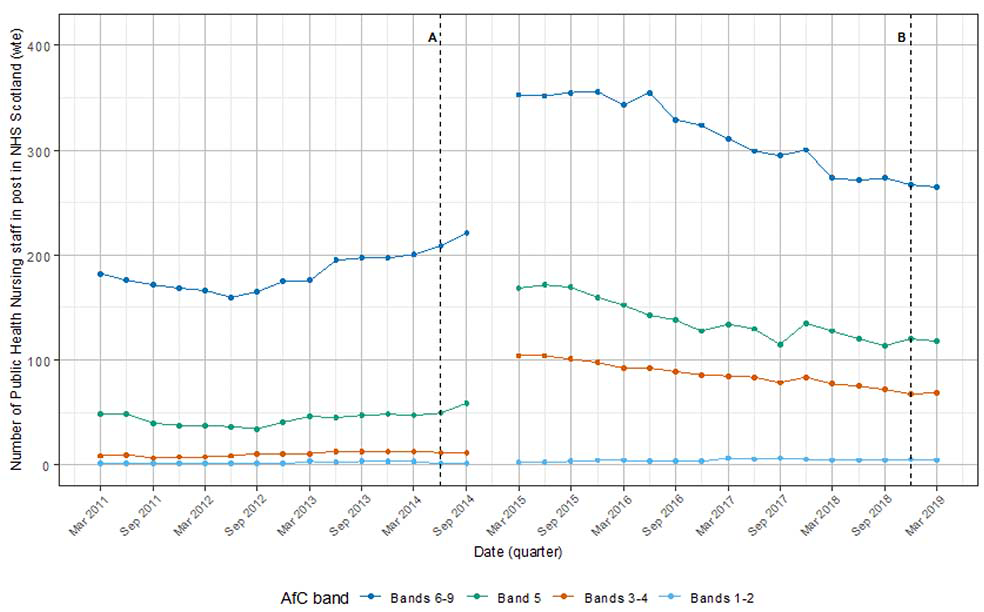
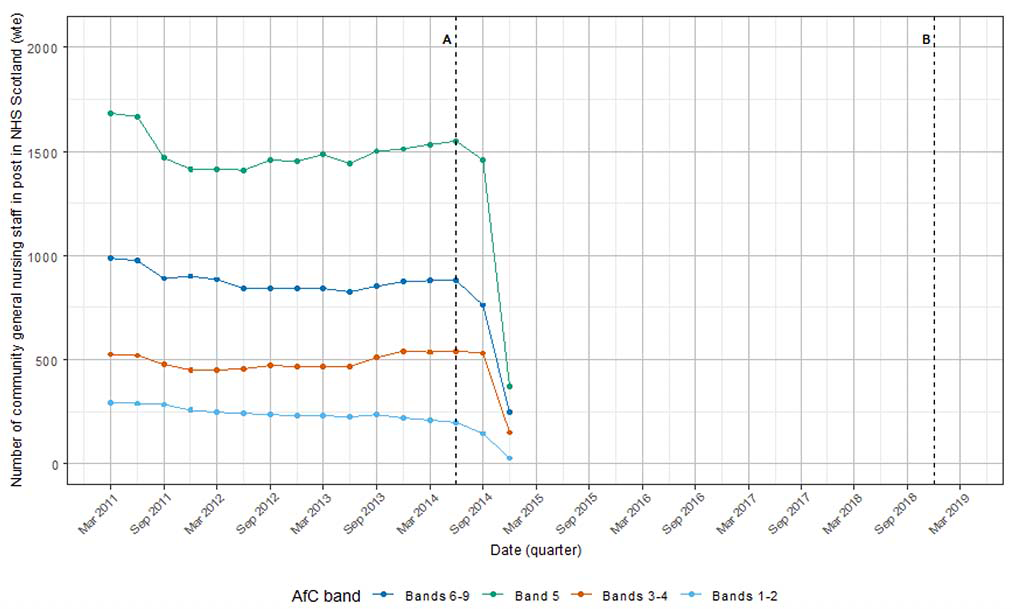
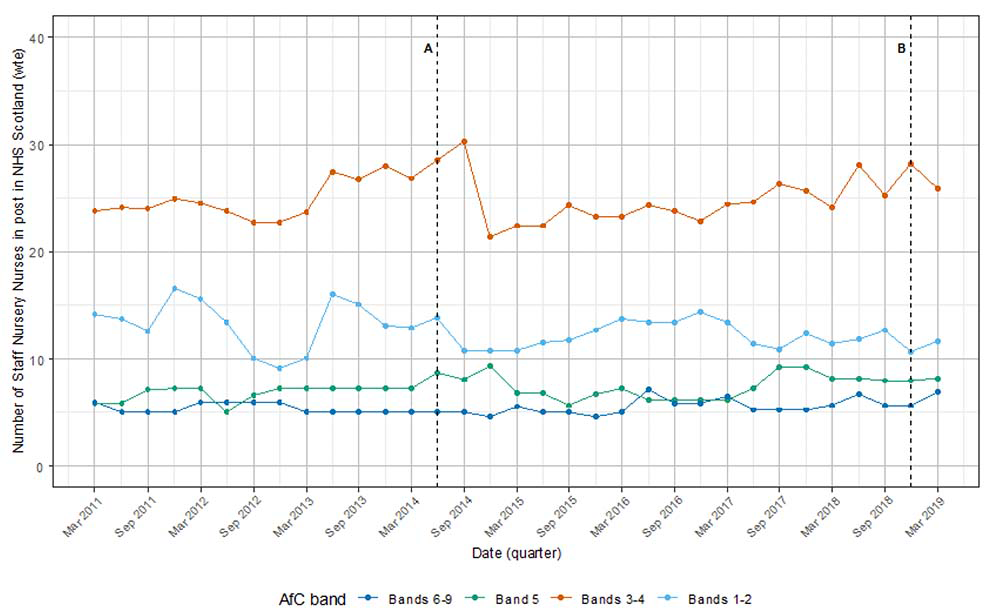
Notes to Supplementary Figures 1-3
A June 2014: date when the Scottish Government announced a commitment to create an additional 500 health visitor posts (WTE, AfC band 6-9) by the end of 2018.
B December 2018: target date when 500 extra health visitor posts (WTE, AfC band 6-9) should be in place.
1. These data relate to individuals recorded against the Public Health Nursing, Community General Nursing and Staff Nursery sub job families in the Scottish Workforce Information Standard System (SWISS).
2. AfC bands: AfC band 1-2 include Healthcare assistants
AfC band 3-4 include Early years workers, Family support workers, Nursery nurses
AfC band 5 include Staff nurses, health visitor students
AfC band 6-9 include Health Visitors, Team leaders, Practice teachers, HV managers, Family nurses, Family nurse supervisors.
3. No AfC Band 1 health visiting staff are recorded, and the numbers recorded in Band 5 include interns.
4. Workforce data for Public Health Nursing staff in post are not available for 31 December 2014. A national exercise to improve the quality of workforce data relating to community nursing was undertaken in 2014. Updated national guidance on assignment of staff to community nursing AfC sub job family categories (including health visiting) was provided to Health Boards, and Boards systematically cleaned data to ensure existing staff were assigned to the correct category between October and December 2014. Data before this period (September 2014 and earlier) are not directly comparable with data from March 2015 onwards.
5. The Community General Nursing sub job family was withdrawn from October 2014 as part of the Community Nursing review.
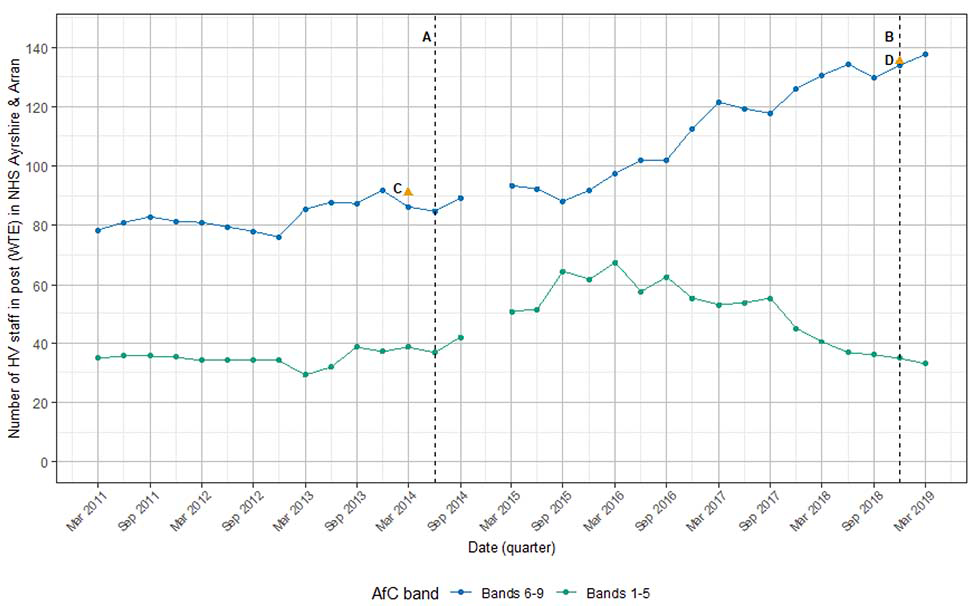
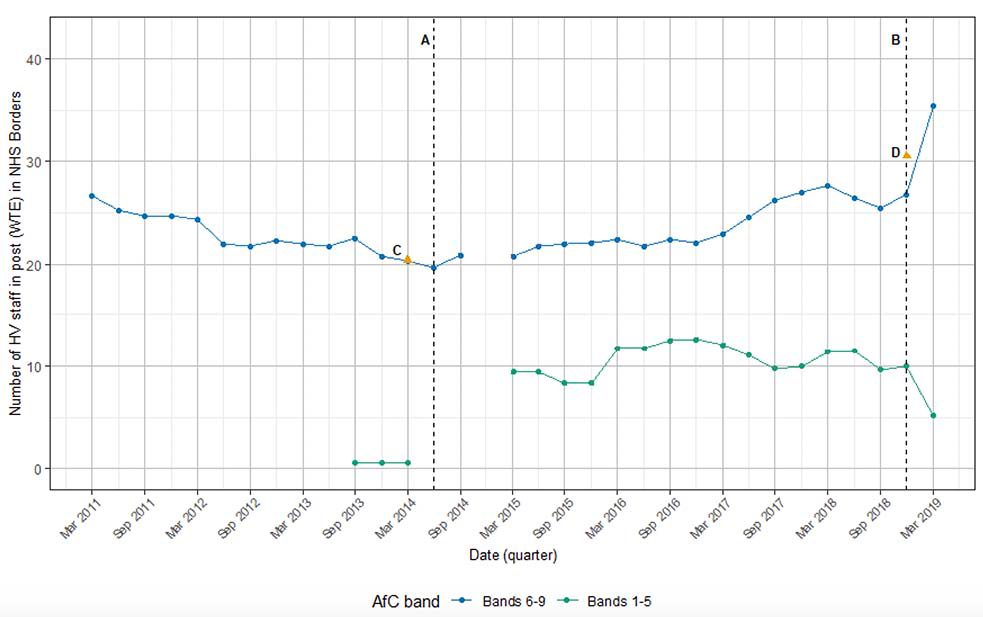
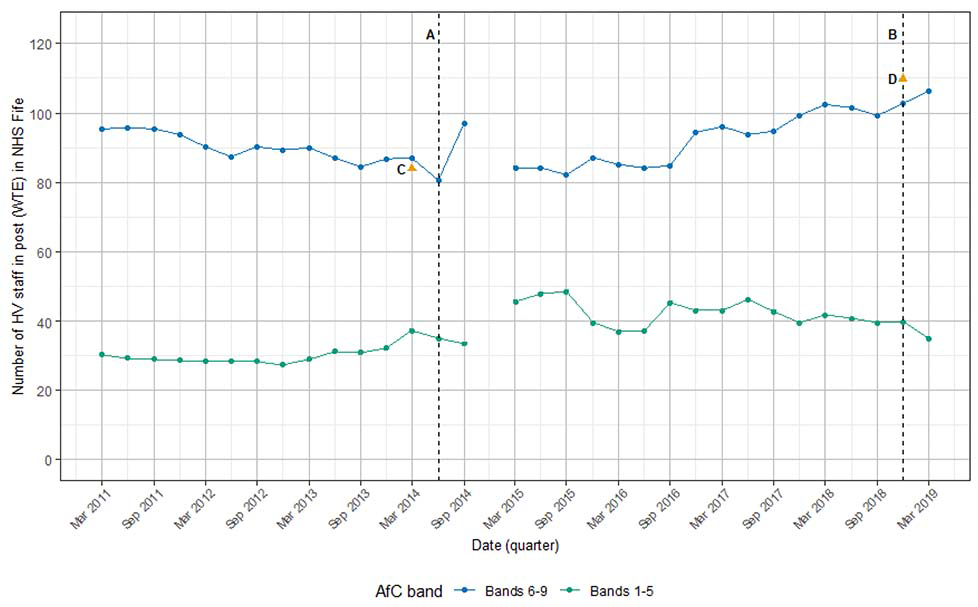

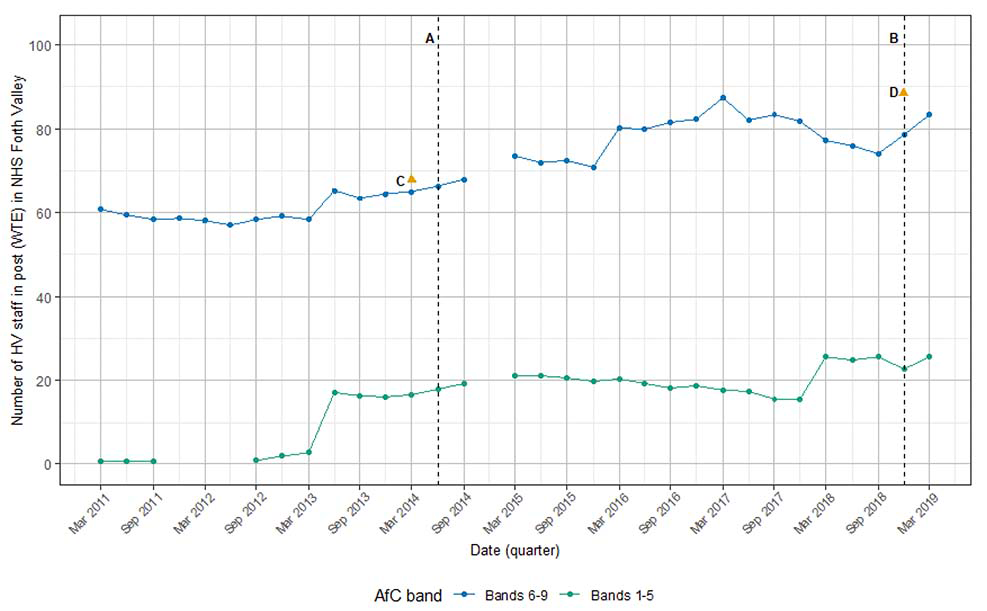
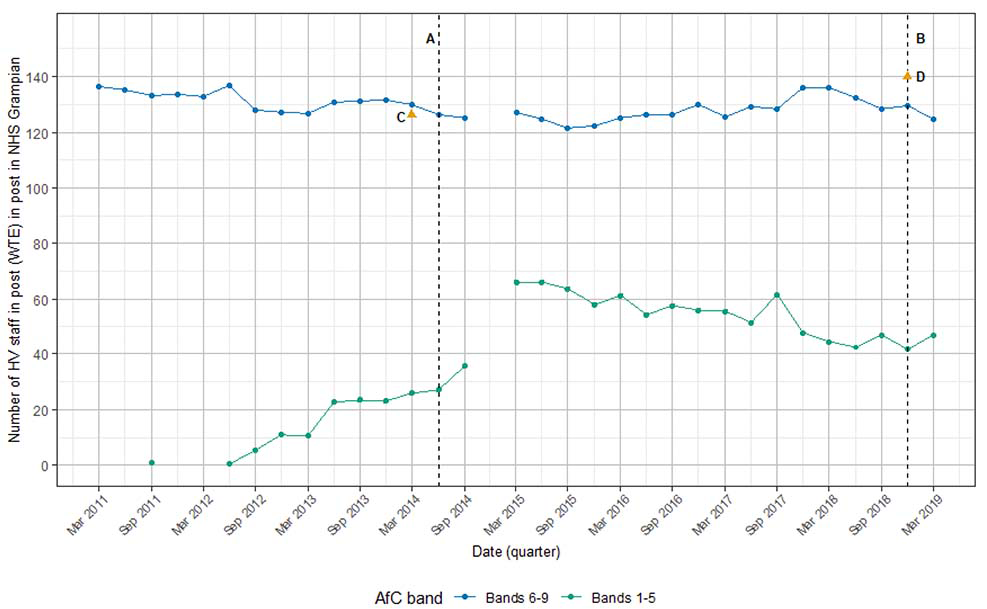
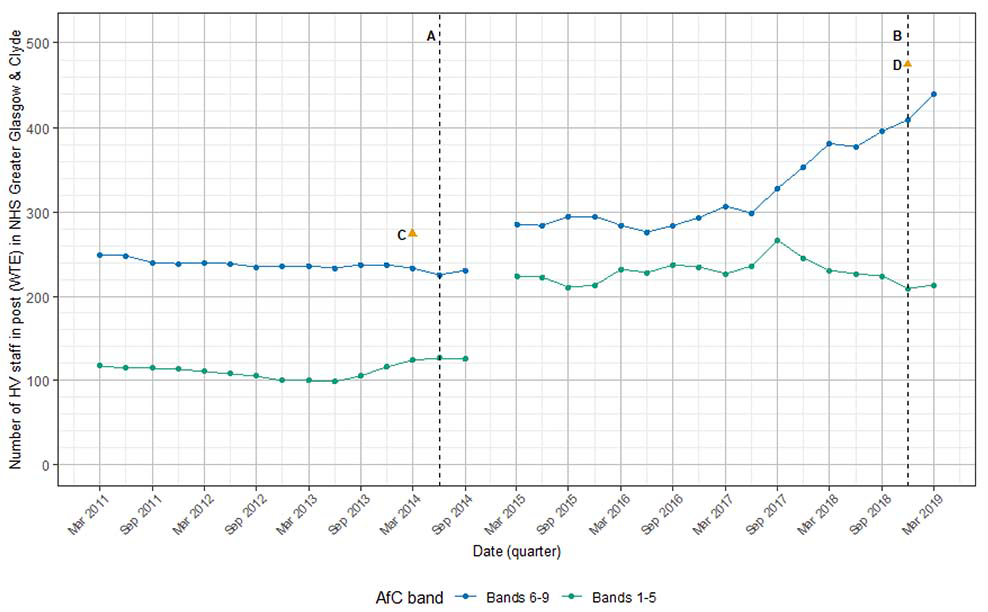
A graph illustrates the number of HV staff (WTE) in post within NHS Highland, across AfC bands, between March 2011 and March 2019.
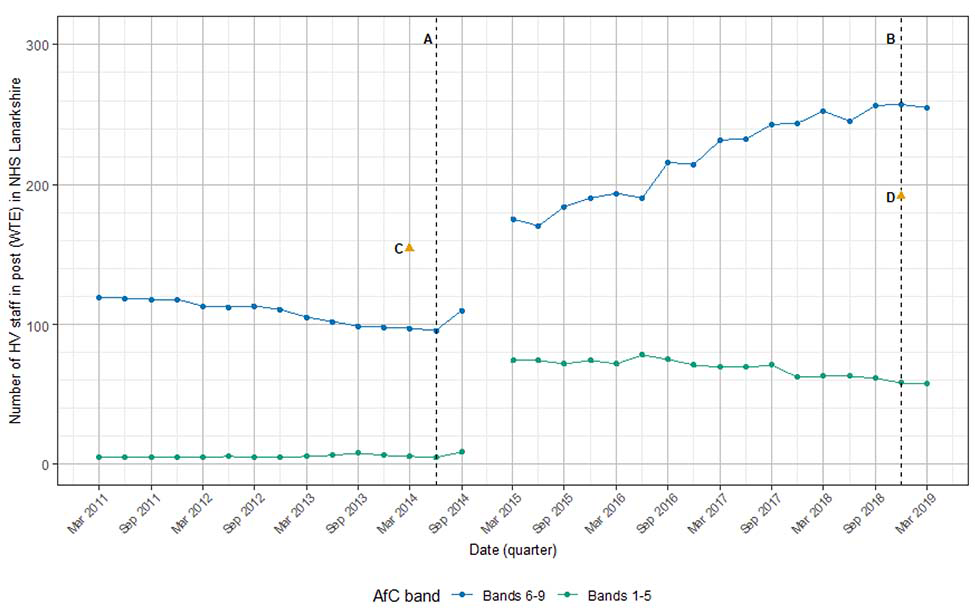
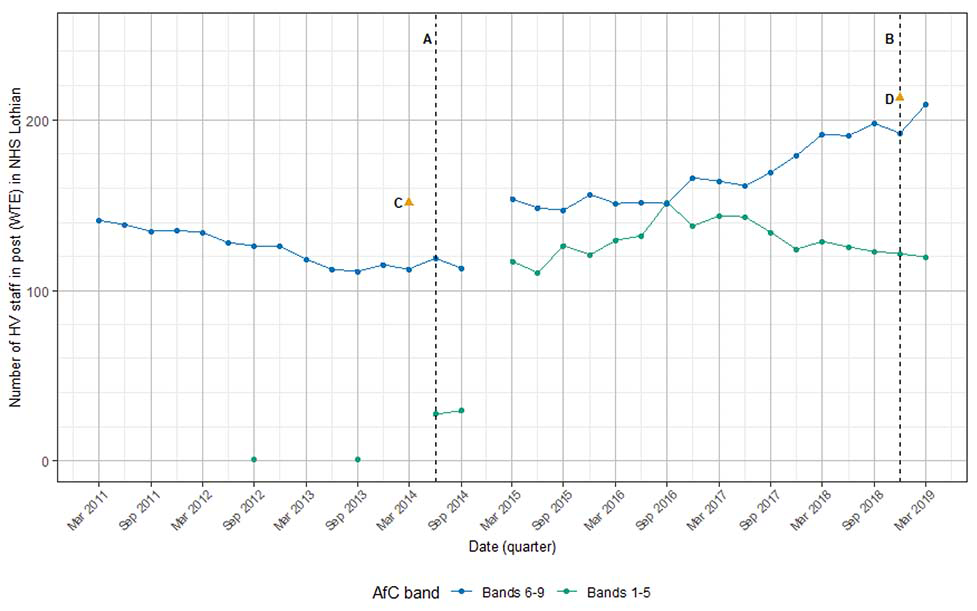
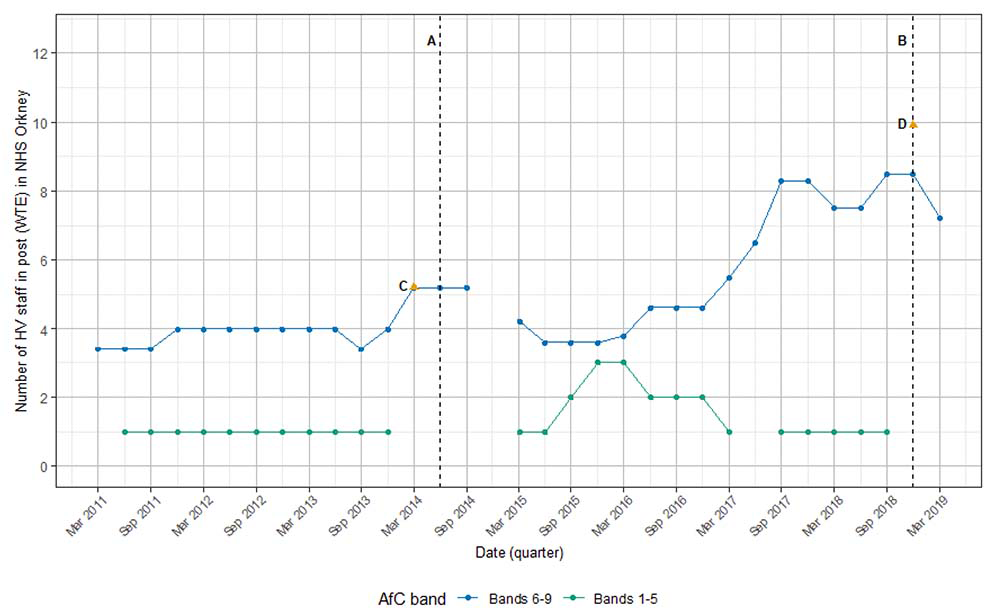
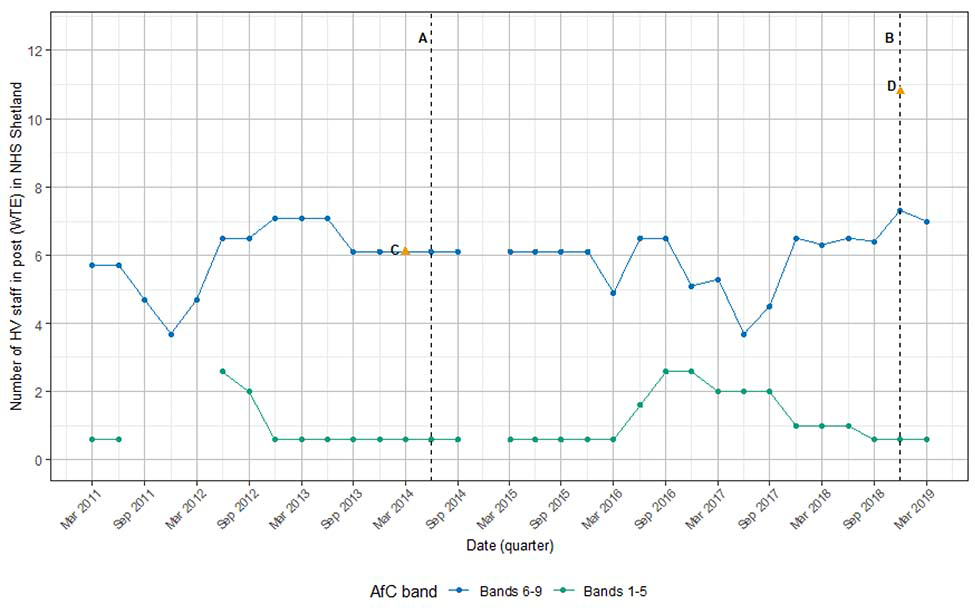
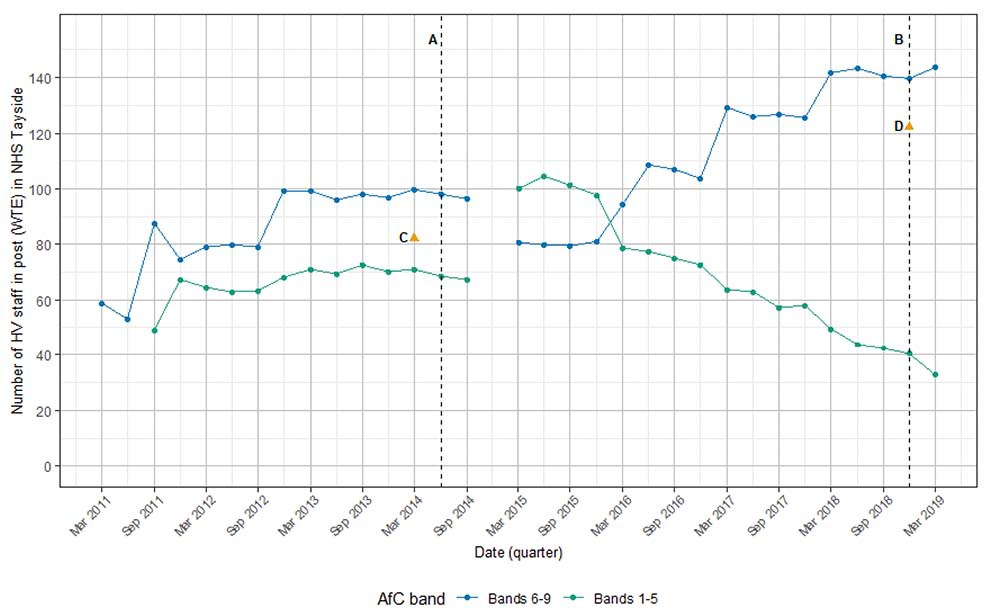

Notes to Supplementary Figures 4-17
A June 2014: date when the Scottish Government announced a commitment to create an additional 500 health visitor posts (WTE, AfC band 6-9) by the end of 2018.
B December 2018: target date when 500 extra health visitor places (WTE, AfC band 6-9) should be in existence.
C Revised upper estimates of the number of qualified HVs in post (WTE, AfC band 6-9) in each health board at 31 March 2014
D Target WTE number of qualified health visitors (AfC band 6-9) to be in post in each health board by 31 December 2018 (Upper estimate).
1. These data relate to individuals recorded against the Health Visiting sub job family in the Scottish Workforce Information Standard System (SWISS).
2. AfC bands: AfC band 1-2 include healthcare assistants
AfC band 3-4 include early years workers, family support workers, nursery nurses
AfC band 5 include staff nurses, health visitor students
AfC band 6-9 include health visitors, team leaders, practice teachers, HV managers, family nurses, family nurse supervisors.
3. No AfC band 1 health visiting staff are recorded, and the numbers recorded in band 5 include interns.
4. Data for health visiting staff in post are presented as whole time equivalent (WTE). An employee may hold more than one appointment within NHS Scotland. Health visiting staff in post (WTE, displayed in Supplementary Figure 4-17) adjusts head-count figures to take account of part-time working (i.e. one person may work 20 hours a week, so head count could make the workforce appear inflated).
5. Workforce data for health visiting staff in post are not available for 31 December 2014. A national exercise to improve the quality of workforce data relating to community nursing was undertaken in 2014. Updated national guidance on assignment of staff to community nursing AfC sub job family categories (including health visiting) was provided to Health Boards, and Boards systematically cleaned data to ensure existing staff were assigned to the correct category between October and December 2014. Data before this period (September 2014 and earlier) are not directly comparable with data from March 2015 onwards.
6. In Highland, health visitors are mainly employed by Highland Council, rather than NHS Highland. These posts are included in the additional 500 places to be recruited, but not included in the workforce data displayed in these figures.
7. In June 2014, the Scottish Government announced a commitment to increase HV numbers (WTE, AfC band 6-9) by 500. The baseline date was taken as 31 March 2014, and the baseline number of WTE qualified HVs in March 2014 used for the target is between 1,047.9 (lower estimate) and 1,114.7 (higher estimate). These figures were provided by ISD in 2016 and represent the estimate for March 2014, adjusted for assumed undercounting based on the data-cleaning exercise undertaken later in 2014 (Information Services Division (ISD) Scotland 2016). The target WTE number of qualified health visitors to be in place by 31 December 2018 is therefore between 1,547.9 and 1,614.7. Due to the time taken to register as health visitors, the data are displayed with a three-month additional window up to March 2019.
How to access background or source data
The data collected for this social research publication:
☒ cannot be made available by Scottish Government for further analysis as Scottish Government is not the data controller.
Contact
Email: Justine.menzies@gov.scot
There is a problem
Thanks for your feedback